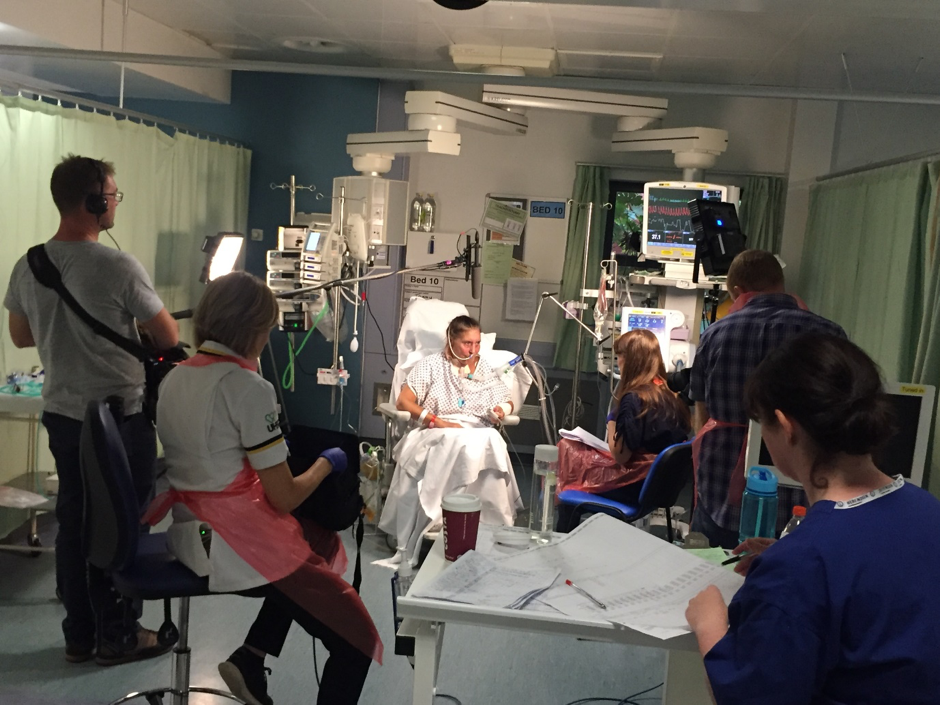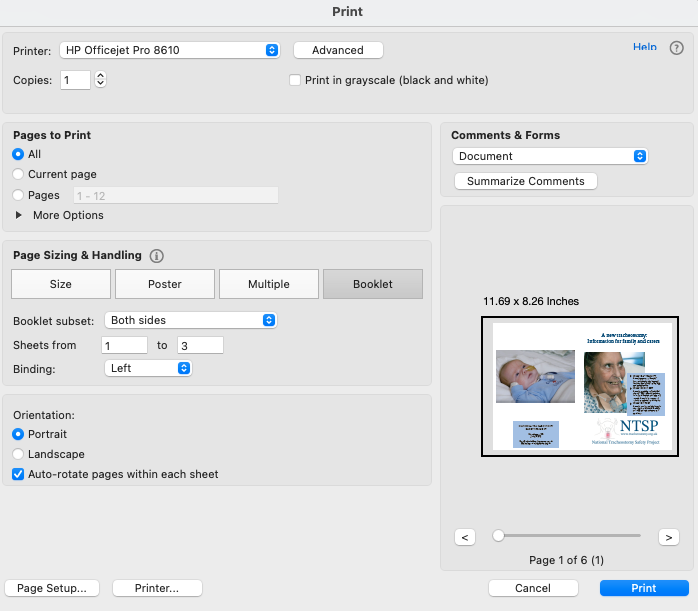Patient & Family Resources
Having a tracheostomy or laryngectomy can be scary, even if the tracheostomy is temporary. Part of our research has identified key concerns and questions expressed by patients and their families. Some of our resources have been specifically developed by patients, for patients. We hope they can help patients, families and healthcare staff explain what has happened, what might happen, and also offer some insight into what is possible with good care.

Information for patients and carers
Whilst this is primarily a website for healthcare professionals, we have lot of information for patients and their families too. We have created a PDF leaflet that you can view/download by clicking the links to the right. If you want to print the booklet as an A5 booklet, please see the additional instructions at the bottom of the page.
Please visit NHS Choices for more information about Tracheostomy.
What is a tracheostomy?
An artificial opening in the front of the neck into the trachea (windpipe). This can be performed by head and neck surgeons or by intensive care doctors. It allows access to the trachea for a variety of reasons, most commonly to 'secure' a safe airway for patients to breathe or to allow prolonged ventilation. Other indications are when a patient cannot safely manage food, liquid or even oral secretions ('protection' of the airway) or if there is a reduced conscious level.
What is a laryngectomy?
This is surgical removal of the larynx (voicebox) usually for throat cancer. There is no longer a connection between the patient's nose and mouth (upper airways) and the lungs. The patient effectively breathes through their neck
Is it permanent?
Total laryngectomies result in permanent changes to the airway anatomy, although partial laryngectomies are possible. Tracheostomies are often temporary but can be long term or permanent, depending on why they were inserted in the first instance.
What problems can occur with a tracheostomy?
Problems can occur at the time of insertion (airway problems, lack of oxygen, bleeding or damage to adjacent structures) or later. Around 80% of problems occur after insertion. Tracheostomy tubes can become blocked or displaced and sometimes this is not always obvious. Later complications include problems with the wound (stoma) or narrowing or weakness of the trachea itself.
Where can I find further information or help?
We regret that we cannot respond to enquiries about individual patients.
There are a number of patient groups and related websites that can offer further information.
National Association of Laryngectomy Clubs
The Global Tracheostomy Collaborative
- Tracheostomy
- Moms of Trach Babies
- Neck-breather’s Connection
- Global Tracheostomy Tube Awareness
- Tracheostomy UK Support Group
- Kids Tracheostomy Support- Australia
- NZ/AUS Trachie Support Group
- Tracheostomy South Africa
- TrachCare
- Trach Chic
- Kids with Vents
Additional information for printing the "New tracheostomy: Information for family and carers" leaflet
This leaflet can be printed out as an A5 booklet by printing the A4 pages double-sided in a set order. A program such as Adobe Reader can do this. You need to select 'Booklet' from the printing options which re-arranges the order of the pages when sent to the printer. You may need to play with your printer setting from the additional 'printer' dialogue button. Depending on your version of Adobe Acrobat/Reader, your print dialogue box might look different to the one below. Searching the internet can answer most of the print questions! We regret that the NTSP cannot advise how to print this as a booklet with your specific printer.
